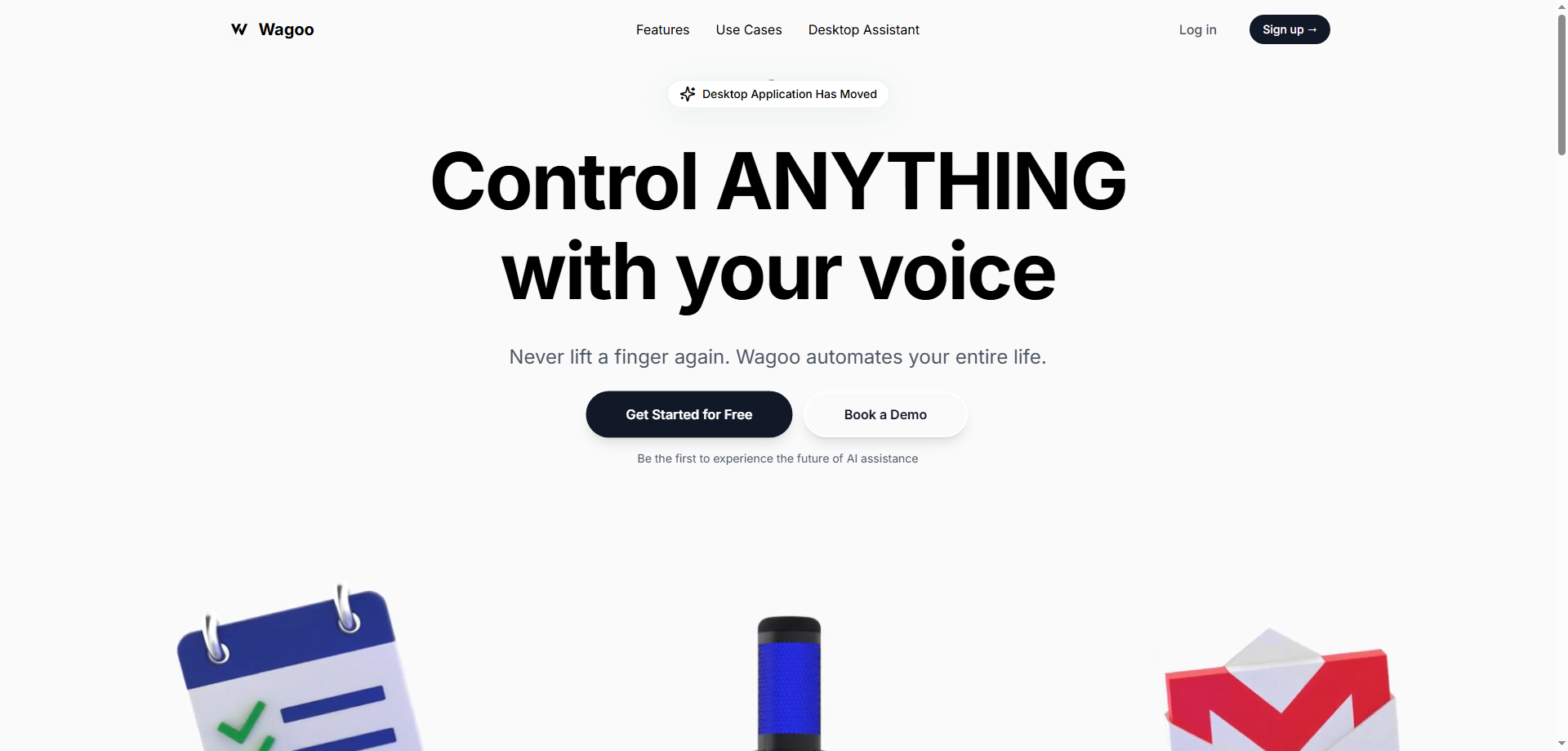1) My Creative Take: Turning voice into workflow
I treat Wagoo Voice Assistant like a studio mic for work. I just speak a scene—“email Sam, push the review to Tuesday 2pm, cc product”—and Wagoo Voice Assistant scores it, mixes it, and ships it. I’m not fighting inbox chaos or calendar tiles; I’m composing my day with voice. On the drive home, I add follow-ups; in a hallway chat, I dictate thank-yous; before bed, I ask for a morning brief. The creative thrill is flow: Wagoo Voice Assistant converts intent into executed tasks—drafted emails, scheduled meetings, tidy calendars—without me ever touching a keyboard.
2) The Disruptive Lens: Can it replace what I use today?
Old stack: email client, calendar app, scheduling links, notes, and a lot of thumb-typing. New stack: Wagoo Voice Assistant as a voice-first command layer that actually does things. Most voice tools search the web; Wagoo Voice Assistant executes—send, schedule, modify, invite, confirm, remind. Because it’s cross-platform, I can start on desktop, continue in the car, finish on mobile. Will it replace my mail and calendar outright? Not entirely—GUI is still handy for edge cases—but for 70–80% of admin churn (compose, reschedule, follow-up, quick checks), Wagoo Voice Assistant becomes my default interface. Less app-hopping, fewer context switches, more done.
3) Real Demand: Why users actually accept it
People don’t want another app; they want fewer steps. Wagoo Voice Assistant nails three hard needs:
- Hands-free execution: Driving, walking, or mid-meeting, I can say “Wagoo, email Li: moving demo to Wed 10am, add Zoom, share deck,” and it handles the lot.
- Inbox relief: Quick triage and templated replies by voice keep messages moving without keyboard time.
- Frictionless scheduling: It proposes times, checks calendars, and fires invites—no “does this work?” ping-pong.
That’s why adoption feels natural. Execs save minutes per interaction; ICs keep focus while offloading admin; teams get fewer slips because Wagoo Voice Assistant turns vague intentions into confirmed actions. The learning curve is just… talking.
4) One-Year Survival Score: ⭐️⭐️⭐️⭐️☆ (4.6/5)
Why it wins:
- Clear, painful problem: Email + scheduling admin is universal.
- True differentiation: Voice-first task execution, not voice search.
- Cross-device utility: Works at the desk and on the go.
- Compounding value: The more commands I use, the more my routine standardizes and speeds up.
Opportunities:
- Deeper calendar logic: Smart timeboxing, conflict resolution, travel buffers.
- Context memory: Learn my tone, templates, and recipient preferences.
- Team workflows: Voice-triggered handoffs, notes to CRM, automatic summaries.
- Privacy trust: Granular permissions and transparent audit trails to win enterprises.
Risks:
- Accuracy & latency: Misheard names or slow responses break trust—must stay crisp.
- Ecosystem dependence: Email/calendar provider changes can disrupt features.
- User comfort: Speaking tasks in shared spaces isn’t always feasible—need solid silent modes.
- Competition: Platform giants can bundle “good enough” voice—Wagoo Voice Assistant must stay better and faster.
Verdict: 4.6/5. With relentless focus on reliability, privacy, and speed, Wagoo Voice Assistant has strong odds to thrive next year and become the de facto voice layer for email and scheduling.
Final Word
Wagoo Voice Assistant lets me run the day the way I think—out loud. Fewer taps, fewer tabs, fewer “later” flags. I talk, it executes, and my work stays in motion.









